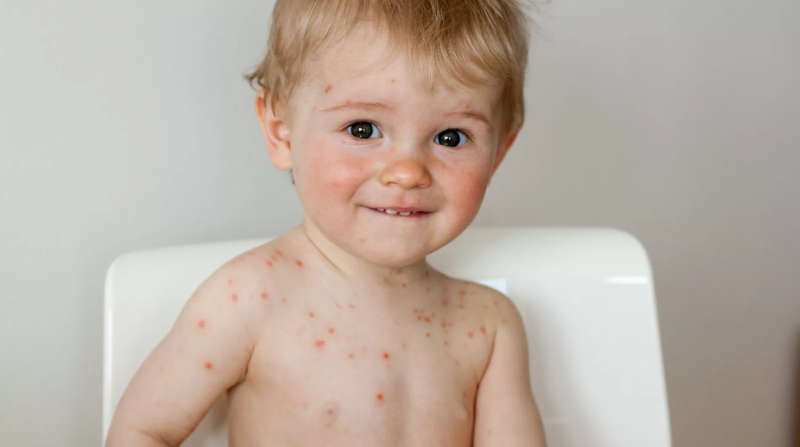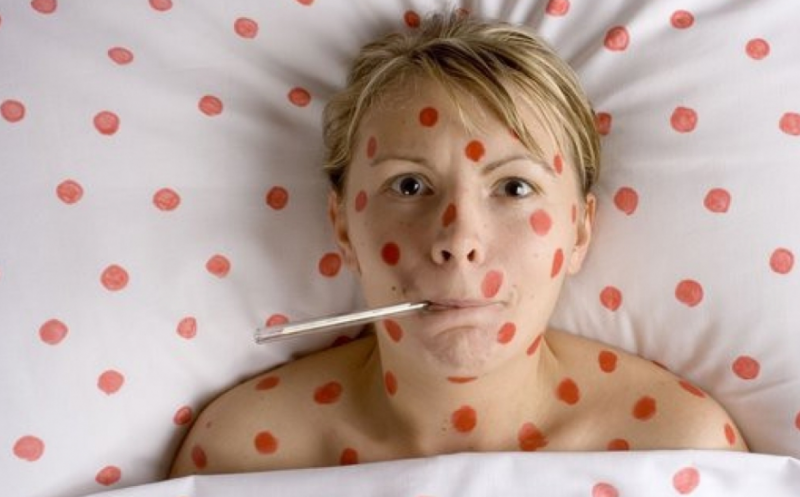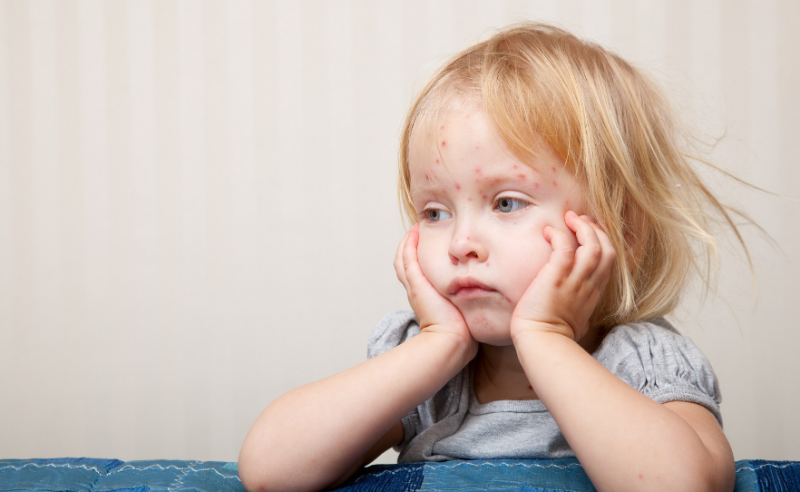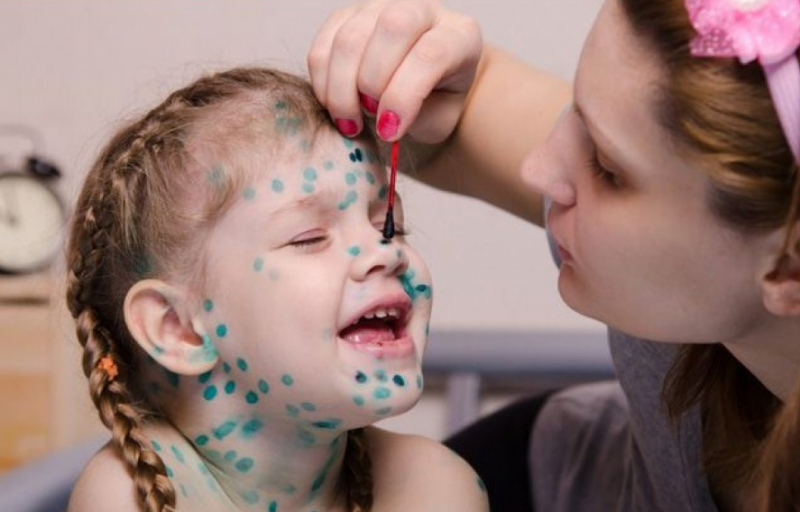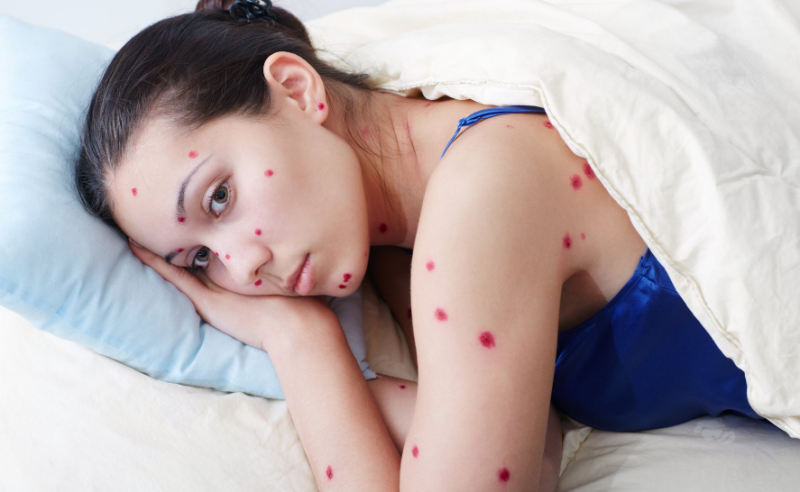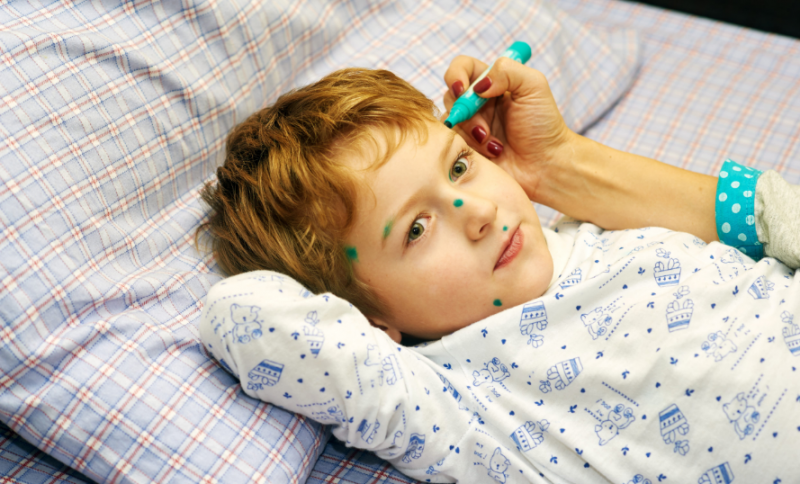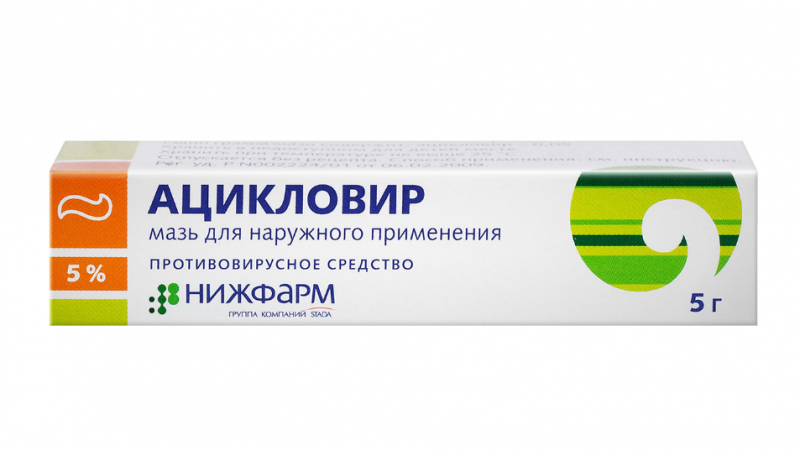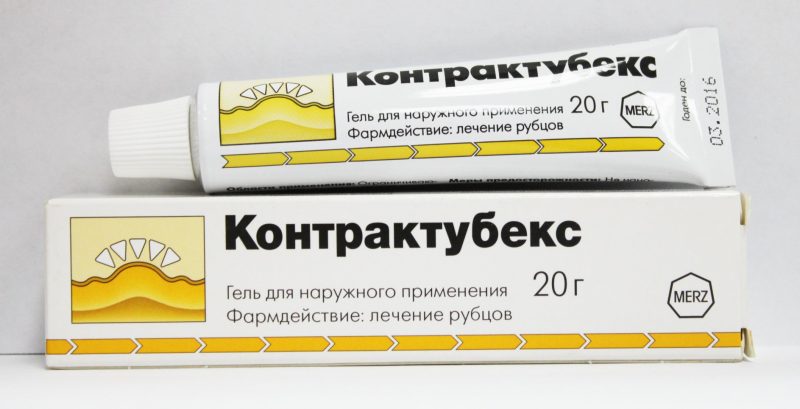A rash with chickenpox causes the patient discomfort and severe itching. If the papules are not handled correctly, an infection can be introduced. In this case, suppuration of the wounds occurs, the body temperature rises, the help of the surgeon is often required.
Material Content:
Why does chickenpox rash occur
The causative agent of chickenpox is the herpes virus. Once in the human body, it is firmly fixed on the mucous membranes. It is there that he actively reproduces.
Next, the virus is introduced into the upper layers of the skin, and healthy cells are affected by chickenpox virus. As soon as many infectious agents accumulate, the body gives a protective reaction - the first rashes appear.
These are small pimples that look very much like a mosquito bite. Then they will increase in size, and later will be filled with a transparent fluid (intercellular fluid of dead healthy cells).
The period from the virus entering the body until the first pronounced symptoms appear is called the incubation period. With chickenpox, it lasts from 7 to 21 days.
How it looks in children and adults
A chickenpox rash does not appear immediately. Before this, a person feels a general malaise, often the condition can be confused with a common cold.
As soon as the virus in the blood reaches its maximum concentration, the first rashes appear on the skin. They can be located anywhere, but according to statistics, this is the area of the neck, head, back.
To distinguish a rash with chickenpox in children from other rashes is quite simple.
At different stages of the disease, it has its own characteristics:
- Pimples. Appear in groups of 2 to 3 pieces. They have the appearance of a small tubercle that rises above the skin by several millimeters. Pimples have a pinkish or red tint, absolutely do not bother the patient. As a rule, the first formations go completely unnoticed.
- Papules Pimples increase, become noticeable, the skin around them becomes inflamed.
- Vesicles. Papules change, take a clear rounded shape, the bubbles are filled with a clear liquid.At this time, it is very important to observe the rules of personal hygiene. If an infection enters the vesicle, purulent formations and complications cannot be avoided. It is impossible to pierce vesicles.
- Crusts. After the vesicle bursts, a small wound appears in its place, which immediately becomes crusty. Its color is from bright red to brown. It is forbidden to remove the scabs on your own, in this case deep scars and scars will remain on the skin. You can cope with them only with the help of special procedures: grinding the skin, injecting hyaluronic acid, using a laser.
If chickenpox goes away without complications, the process of rash formation looks just like that.
But if damage to the papules or vesicles occurs, new stages of rashes appear:
- Pustules. These are small formations that are filled with pus or fluid mixed with blood. In this process, the patient's body temperature rises, fever begins.
- Erosion. After the pustule is opened, deep wounds (erosion) form in its place.
- Scarring. May appear only in case of mechanical damage to vesicles or crusts.
In children, chickenpox scars may still drag on. But adults will have scars forever.
The nature of the chickenpox rash
A chickenpox rash can appear on any part of the skin, including on the mucous membranes. Rashes are cyclical in nature, pimples that appear undergo certain stages of development, after which they disappear.
The rash in children and adults with chickenpox looks exactly the same. The only difference is the general condition of the patients. In adults, the disease is quite acute, often hospitalization is required.
Almost always, rashes are accompanied by severe itching. This symptom is due to the fact that the virus, dying, irritates the nerve receptors of the skin.
At what stage does it appear
Immediately after the incubation period, the active stage of rashes begins. It lasts, on average, from 5 to 9 days. It all depends on the human immunity - the stronger it is, the faster the rashes will pass.
The time period for the formation of a rash is as follows:
- The initial stage of chickenpox. During the day, the first pimples appear. Their number, as a rule, does not exceed 10 pieces.
- After 3 to 4 hours, pimples will turn into papules.
- After 6 to 8 hours, they will be filled with liquid, vesicles will appear.
- In this form, the rash lasts no more than 3 to 5 days.
- After, wounds and crusts form, which disappear within a few weeks.
To speed up the course of the disease will not work. Antiviral drugs will only alleviate the symptoms. The main task of the patient is to properly handle the rashes, try not to comb the papules, and even more so the vesicles.
Concomitant clinical symptoms
For chickenpox, not only skin rashes are characteristic.
There are other symptoms:
- general malaise;
- lack of appetite;
- body aches;
- migraine;
- increase in body temperature (especially during active rashes);
- runny nose;
- a sore throat.
As a rule, after the rash period ends, the symptoms of chickenpox disappear on their own.
How to treat a papular vesicular rash
A papulovascular rash causes discomfort to patients. There is severe itching, which intensifies at night. To cope with it, you need to use drugs and properly process papules.
In children
If you do not want the infection to not enter the vesicles, you need to handle them.
Doctors recommend the following remedies:
- Brilliant green. Zelenka treated the rash 30 to 40 years ago. This solution contains alcohol, which quickly dries and promotes the speedy healing of vesicles. The minus of green is that it is very difficult to wash it from the skin, and even more so from the hair. If the patient perspires, green spots will be printed on clothes and bedding.
- "Fukortsin." The solution is bright pink, odorless. Covers papules with a thin film, which creates a barrier to infection. The disadvantage of the drug is that it is difficult to wash it just like green stuff.
- Tsindol. This is a thick suspension of white color. The drug has proven itself in the treatment of chickenpox. Promotes quick drying of pimples, removes itching, has bactericidal properties. The downside of the remedy is that it greatly overdries the skin.
- Calamine. The tool has an anti-inflammatory effect, relieves swelling, removes itching. Minus - high pricing policy (about 1200 rubles).
In addition, to relieve itching with chickenpox in children, folk remedies can be used. For example, make lotions from soda solution or bathe a baby in potassium permanganate (2-3 crystals per bath).
In adults
In adults, chickenpox is severe, rashes cover most of the body, including mucous membranes.
In addition to the drugs that have been described above, adults can use:
- "Acyclovir." The ointment is thick, white. You can lubricate papules up to 4 times a day, applying the product in a thin layer. Doctors also advise taking the medicine in tablet form to kill the virus from the inside.
- "Psilo-balm." Clear gel. Quickly eliminates itching. You can apply up to 5 times a day.
- Miramistin. Can be used to treat mucous membranes.
If the patient's condition worsens during chickenpox, a fetid odor emanates from papules, you should immediately consult a doctor.
Skin condition after recovery
If chickenpox proceeded without complications, there were no purulent abscesses, then after the disappearance of all wounds and crusts, the skin will be clean, without scars and scars. The only reminder of the disease is increased dryness of the dermis. After an illness, cosmetologists advise using emollient body milk for some time.
With chickenpox rashes last up to 7 - 10 days. But the crusts go away in 2 - 3 weeks.
Ways to get rid of traces after chickenpox
If deep scars remain after the papules, it takes time for them to last.
Speed up the process will help:
- Hydrocortisone ointment. Apply it immediately after the appearance of scars. The result will be noticeable in 2 - 3 weeks.
- "Contractubex". Ointment removes the upper layers of the epidermis, starts the process of regeneration of cells and tissues.
- Cosmetic procedures (grinding, laser, pilling).
If the scars are very deep, most likely they cannot be completely removed.
The chickenpox virus is quite volatile; therefore, it affects not only children, but also adults. When the first symptoms of the disease appear, it is better to consult a doctor who will prescribe the correct treatment regimen.
Do not take the disease seriously - according to statistics, out of 10,000 cases, 2 are fatal. In adults, this percentage is several times higher.


